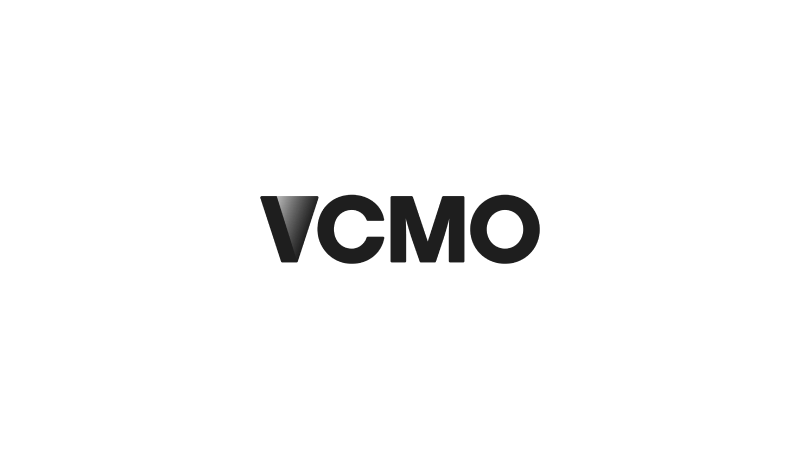Discover how many days a Fractional CMO typically works, why engagement levels vary, and how flexible models deliver strategic value, scalability, and ROI.
Introduction — Why ‘Days Worked’ Is the Wrong Question
“How many days will you work each month?”
It’s one of the first questions founders, CEOs and investors ask a Fractional CMO — and one of the least useful.
The number of days a Fractional CMO spends with your business isn’t a measure of commitment or impact. It’s simply the delivery mechanism for strategic outcomes. What truly matters is what happens inside those days — the clarity, structure, and commercial progress they bring.
Fractional leadership isn’t a time-and-materials model; it’s a precision-engineered relationship between expertise, cadence, and outcomes. Some leaders work two days a month to shape strategy and coach internal teams. Others embed themselves for ten or more days, steering transformation or preparing a company for investment or exit.
The variable nature of these engagements is not a flaw — it’s a feature. It gives CEOs and investors access to the right calibre of leadership, scaled exactly to the needs and maturity of their business.
In this article, we’ll unpack how fractional CMOs structure their time, why the number of days varies so widely, and how to determine the right engagement cadence for your stage of growth.

Understanding the Fractional Model
Fractional leadership is not a diluted version of executive capability — it’s a re-engineered model for accessing it.
At its core, a Fractional CMO provides senior-level marketing leadership without the full-time cost, overhead, or inflexibility of a permanent hire. The model is built on the principle of fractional engagement: a defined number of days or hours per month dedicated to delivering strategic outcomes, typically governed by a service agreement rather than an employment contract.
Yet, the reality is that “days worked” can mean very different things across businesses. One organisation may engage a Fractional CMO for strategic direction and mentoring — one or two days per month — while another may require eight to twelve days for embedded leadership across multiple teams or brands.
The model flexes for three key reasons:
- Business maturity: Early-stage companies need foundational structure and guidance, while established mid-tiers require leadership alignment and performance oversight.
- Commercial urgency: High-growth or investor-backed firms often demand faster turnaround, greater involvement, and deeper integration.
- Capability gap: The smaller or less experienced the internal team, the more hands-on the CMO may need to be.
Importantly, fractional engagements are rarely linear. They often evolve — starting with a diagnostic or strategic reset phase, moving into a stabilisation period, and then transitioning to lighter-touch oversight as systems and confidence mature.
This adaptability is what makes the model so commercially efficient: you’re not buying hours, you’re accessing impact at the right intensity, for the right stage.
How Many Days Does a Fractional CMO Work Each Month? Typical Patterns Explained
There’s no single formula for how many days a Fractional CMO works — because the role flexes to fit each organisation’s size, maturity, and goals. However, certain patterns have emerged across hundreds of engagements in the UK and globally.
Broadly, fractional CMOs fall into three cadence bands:
1. Early-Stage or Founder-Led Businesses — 2 to 4 Days per Month
At this stage, the business often has limited marketing infrastructure and relies heavily on founder energy and intuition. The Fractional CMO’s focus is on laying strong strategic foundations — defining positioning, customer segments, and go-to-market structure — while setting up reporting frameworks and early digital infrastructure.
Typical responsibilities include:
- Establishing marketing strategy and metrics
- Defining the value proposition and messaging hierarchy
- Coaching junior staff or outsourced partners
- Setting up CRM and lead tracking systems
- Building the first structured marketing plan
This cadence allows founders to retain control while gaining high-level guidance without committing to a full-time senior salary.
2. Scaling SMEs and Mid-Tier Firms — 4 to 8 Days per Month
For businesses between £2–£30 million in turnover, the focus shifts from creation to optimisation. These companies typically have marketing teams in place but lack strategic alignment, leadership focus, or measurement discipline.
A Fractional CMO in this context will spend one to two days per week embedded with the leadership team, shaping demand generation strategy, refining positioning, and ensuring that marketing and sales are pulling in the same direction.
Typical responsibilities include:
- Aligning marketing strategy with growth goals
- Overseeing team structure and agency management
- Implementing measurable KPIs and dashboards
- Leading campaign planning and performance reviews
- Building investor or board confidence through clarity and reporting
This is the most common fractional engagement pattern — providing sufficient time for embedded leadership and accountability without full-time cost.
3. PE-Backed or High-Growth Firms — 8 to 12+ Days per Month
In private equity or complex, multi-brand environments, the need for pace, rigour, and stakeholder confidence drives more intensive engagement. Here, the Fractional CMO operates as an integral member of the leadership team, often managing a portfolio of transformation initiatives.
Typical responsibilities include:
- Full ownership of marketing strategy and budget
- Integration of multiple brand architectures post-acquisition
- Rebuilding underperforming teams or replacing agency models
- Investor and board reporting on growth metrics and ROI
- Leading brand and demand programmes aligned to exit or expansion plans
This cadence provides near full-time leadership — but with the flexibility to scale back once systems and direction are embedded.
While these categories offer a useful benchmark, fractional relationships are inherently fluid. Many start lighter, increase as transformation begins, and then taper as teams become self-sufficient.
The real question is not “how many days”, but “what do we need to achieve — and how quickly?” The answer determines the cadence.

The Engagement Spectrum: From Advisory to Embedded Leadership
Not all fractional engagements look the same.
In fact, the flexibility of the model is precisely what makes it so powerful. A Fractional CMO can operate across a spectrum of engagement types — from light-touch advisory to fully embedded leadership — depending on the business’s strategic needs, urgency, and budget.
Below is a simplified comparison to help visualise how these models differ:
Why This Matters
Understanding these engagement types helps founders and CEOs make smarter decisions about where to deploy senior marketing leadership.
A business preparing for investment, for example, may benefit from a short, high-intensity transformation phase — followed by a lighter oversight cadence as systems stabilise.
Conversely, an SME entering a new market may require steady, month-on-month guidance to ensure consistent messaging and measurable growth.
Fractional CMOs don’t fit into rigid templates. Instead, they calibrate their time and involvement to your commercial reality — delivering leadership as a scalable service, not a fixed cost.
Why Variation Is a Strength, Not a Weakness
At first glance, the lack of a fixed model for how many days a Fractional CMO works each month might seem confusing — even inconsistent. But that flexibility is, in fact, the model’s greatest strength.
In traditional employment structures, companies are locked into rigid contracts and static resource levels. Marketing leadership is often treated as a fixed cost rather than a variable investment. The fractional model turns that equation on its head. By flexing time and scope in line with strategic need, it gives businesses control, agility, and commercial focus.
Here’s why that variation delivers value:
1. Cost-Effectiveness Without Compromise
A full-time CMO at a mid-tier business can cost £180,000–£250,000 once salary, benefits, and overheads are factored in. For many SMEs and scale-ups, that level of commitment is premature.
Fractional CMOs enable access to that calibre of strategic expertise for a fraction of the cost — typically £4,000–£12,000 per month, depending on scope and complexity.
Because their time is aligned to outcomes rather than headcount, you’re investing in impact, not employment.
It’s executive-level capability without the long-term payroll liability.
2. Scalable Leadership That Matches Growth Stage
As businesses evolve, so do their marketing needs. A startup raising its first investment round may need a few days a month to craft positioning and investor messaging. A PE-backed firm preparing for exit may need 10+ days per month of intense leadership to manage integration and scale brand visibility.
Fractional leadership flexes with that journey. It scales up when transformation is required — and down when systems and teams are running smoothly. This elasticity allows marketing leadership to grow in lockstep with business maturity, not ahead of it.
3. Aligned With Business Objectives, Not Hours
Traditional roles reward presence; fractional roles reward performance. Fractional CMOs are engaged to deliver strategic outcomes — such as revenue growth, brand repositioning, or market expansion — not to fill diaries. Their time is concentrated on high-leverage work: defining strategy, aligning stakeholders, coaching teams, and managing key initiatives.
This alignment ensures that every hour invested has purpose. The focus is sharper, accountability higher, and commercial outcomes clearer.
“Our Fractional CMO spends fewer days in the business than our previous full-time hire — but delivers more measurable impact, faster.”
VCMO Client
4. Encourages Objectivity and Momentum
Because fractional leaders are not embedded full-time, they retain the distance needed to see patterns, question assumptions, and challenge internal bias.
They bring a rhythm of review and decision-making that prevents complacency. This cadence keeps strategy live — regularly reviewed, tested, and evolved based on performance data.
In this sense, fractional leadership doesn’t just deliver flexibility; it embeds continuous improvement.
In summary, the variation in time commitment is not a weakness of the model — it’s what makes it work. It allows marketing leadership to be applied with precision, ensuring businesses access the right level of expertise at the right moment in their growth curve.

Why Some Fractional CMOs Avoid Day Rates
When CEOs and founders first explore fractional marketing leadership, one of the most common questions is: “What’s your day rate?”
It’s a fair question — but it’s also the wrong one.
Top-performing Fractional CMOs rarely price their work purely by the day, because their value isn’t tied to the clock. Instead, they anchor their fees to strategic impact, scope, and commercial outcomes.
Here’s why the best in the profession are moving away from traditional day-rate billing.
1. Time ≠ Value
A Fractional CMO’s greatest contribution lies in the quality of their thinking, not the quantity of their time.
In a single strategy session, they might redefine your positioning, align your leadership team, and identify the root cause of underperformance — insights that could reshape your trajectory for years.
To measure that contribution by the hour is to undervalue its leverage. Senior strategic work should be priced for outcomes, not attendance.
2. Encourages Misaligned Incentives
Day-rate models can create the wrong dynamic. If a leader is paid by the day, there’s an implicit incentive to spend more time — not necessarily to achieve faster results.
Value-based or retainer models, on the other hand, align incentives. Both parties are invested in achieving measurable progress quickly and efficiently.
The focus shifts from input to impact.
As one VCMO client remarked:
“We don’t care how many hours it takes — we care that the strategy works. The retainer gives us clarity, continuity, and accountability.”
3. Fractional CMOs Operate as Strategic Partners, Not Contractors
Day rates often imply transactional work — a model better suited to consultants or interim managers.
A Fractional CMO, by contrast, operates as an embedded strategic partner, holding long-term accountability for direction, performance, and team capability. Their scope spans planning, leadership, and execution oversight, all of which require consistency rather than sporadic attendance.
Retainers or fixed-scope agreements support this continuity. They give both sides structure, predictability, and trust.
4. It Reflects the Broader Shift to Value-Based Professional Services
The move away from hourly billing is not unique to marketing.
Law firms, accountancy practices, and management consultancies are all shifting towards value-based pricing models that better reflect the worth of expertise. Fractional CMOs follow the same principle: charging for strategic value delivered rather than time spent.
It’s a sign of professional maturity — one that reinforces the growing credibility of fractional leadership as a legitimate executive model.
5. Flexibility Still Exists — It’s Just Smarter
Avoiding day rates doesn’t mean rigidity. Most fractional engagements still include flexibility in cadence and commitment — scaling from two to ten days a month as priorities shift.
What changes is how that time is structured:
- Strategy phases may be front-loaded with higher input.
- Implementation or mentoring phases taper to lighter touchpoints.
- Retainers or flexible scopes ensure momentum without micromanaging hours.
The result? You still get adaptability — but without the administrative friction of counting days.
6. Have a Smarter Conversation About Value
Ultimately, asking “how many days will you work?” should give way to “what outcomes will you deliver?”
Businesses hire Fractional CMOs for commercial impact — sharper positioning, stronger teams, accelerated growth — not to fill calendars.
The leaders who avoid day rates are usually those confident enough to stand behind measurable results.
That’s not less transparent. It’s simply more grown-up.

Conclusion — Choosing the Right Model for Your Business
There’s no single formula for how many days a Fractional CMO should work each month — and that’s precisely the point. The strength of the fractional model lies in its flexibility, its precision, and its alignment with commercial outcomes rather than corporate convention.
For some organisations, that means two or three days a month — enough to provide senior oversight, strategic recalibration, and board-level direction. For others, it might mean a deeper, embedded partnership of eight to ten days, guiding transformation, mentoring teams, and driving change from within.
And in some cases, it’s project-based — short, intensive sprints to unlock specific growth challenges or prepare for an investor milestone.
The best Fractional CMOs design their engagement model around the rhythm and maturity of the business, not the other way around.
Key Takeaways for Business Leaders
If you’re assessing how many days a Fractional CMO should work in your business, consider these principles:
- Start with Strategy, Not Scheduling: Define what you need to achieve — growth, clarity, capability uplift — before deciding how much time you require. Hours follow outcomes, not the reverse.
- Prioritise Impact Over Attendance: A seasoned Fractional CMO can often achieve in a few focused days what a full-time hire might spread across weeks. Look for evidence of commercial traction, not calendar occupancy.
- Expect Variability: Engagement intensity should change as your business evolves. Don’t fear fluctuation; embrace it as part of a smarter, more responsive leadership model.
- Align Incentives Through Retainers or Defined Scopes: Avoid transactional day-rate thinking. Opt for models that tie value to outcomes and foster partnership rather than dependency.
- Choose Experience That Scales With You: The best Fractional CMOs bring not just strategy, but the ability to build your internal capability. Their true legacy is making your team stronger long after their engagement ends.
Fractional CMOs are not stopgaps; they’re accelerators. They help growing businesses think like enterprises — with the rigour, focus, and financial discipline of a full-time executive, but at the right scale for their current stage.
For founders, CEOs, and investors, the question isn’t how many days you’re buying — it’s how much transformation you’re ready to unlock.
If you’re exploring whether a Fractional CMO could help your business grow with greater focus and less risk, take VCMO’s 3-minute Fractional CMO Readiness Assessment to see how the model could fit your goals.
Get in touch: If this article reflects what you’re experiencing, get in touch to explore whether fractional marketing leadership is the right fit for your business.
About VCMO
VCMO is a UK-based provider of fractional marketing services, supporting B2B SMEs—ranging from funded scale-ups to mid-tier and private equity-backed businesses—through key moments of growth and transformation. Its Chartered Fractional CMOs and SOSTAC® certified planners embed strategic marketing leadership into organisations navigating product launches, new market entry, acquisitions, and leadership gaps.
What’s a Rich Text element?
The rich text element allows you to create and format headings, paragraphs, blockquotes, images, and video all in one place instead of having to add and format them individually. Just double-click and easily create content.
- By following these tips, you can make sure you’re noticed on LinkedIn and start building the professional connections you need to further your career.
-

Static and dynamic content editing
A rich text element can be used with static or dynamic content. For static content, just drop it into any page and begin editing. For dynamic content, add a rich text field to any collection and then connect a rich text element to that field in the settings panel. Voila!
How to customize formatting for each rich text
Headings, paragraphs, blockquotes, figures, images, and figure captions can all be styled after a class is added to the rich text element using the "When inside of" nested selector system.


Ready to take your marketing to the next level? Let us help you get there.
Subscribe to Our Newsletter
Fractional Edge is our montly newsletter sharing expert opinion on the latest trends in fractional leadership, curated marketing content from leading sources, VCMO events, and much more. Subscribing is quick — just add your name and email.











.jpg)





